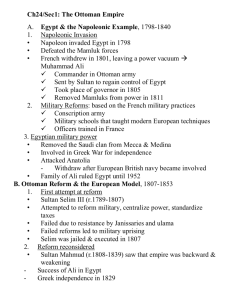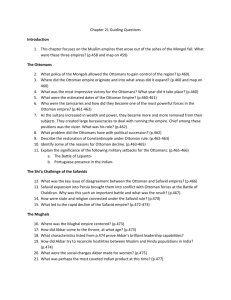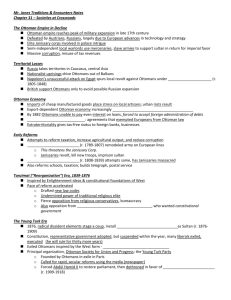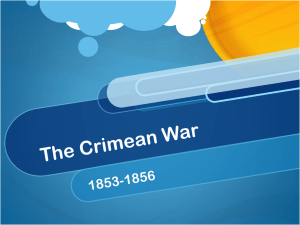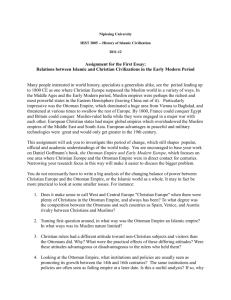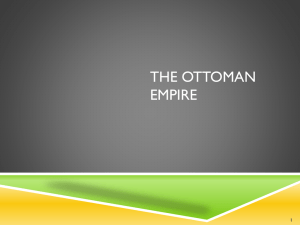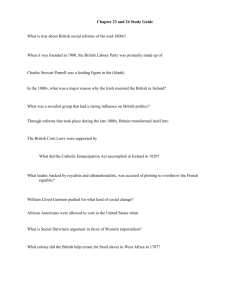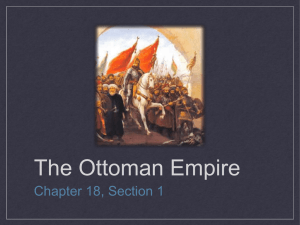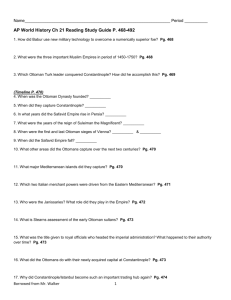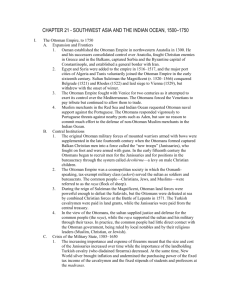Snapshot of an Empire: The Ottoman
advertisement
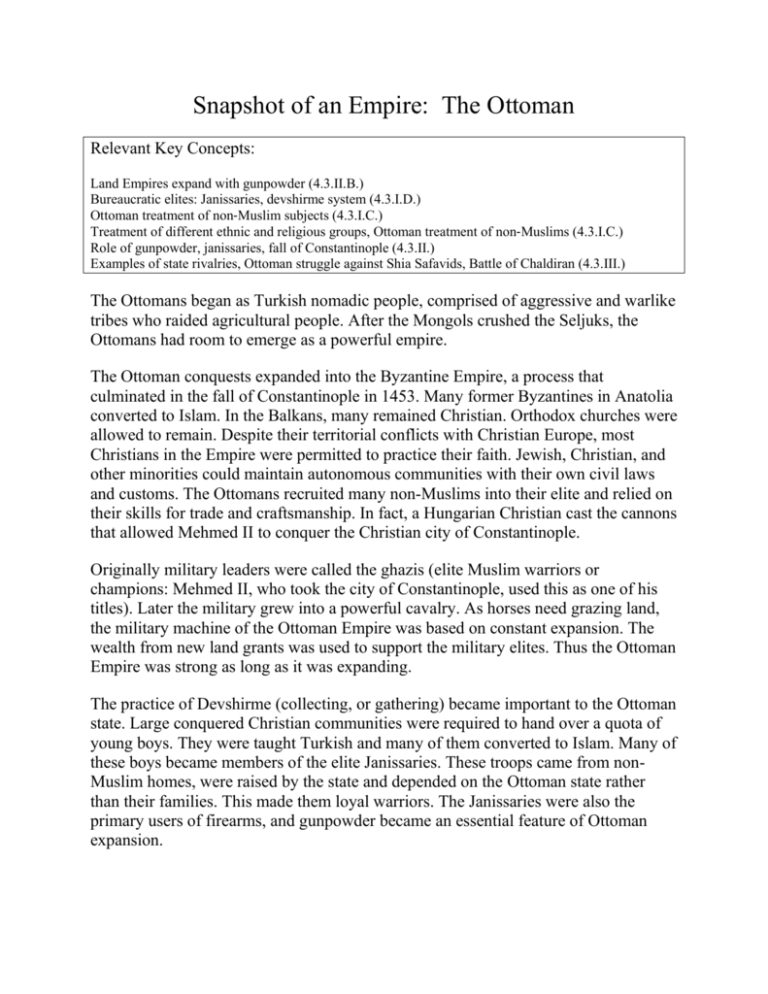
Snapshot of an Empire: The Ottoman Relevant Key Concepts: Land Empires expand with gunpowder (4.3.II.B.) Bureaucratic elites: Janissaries, devshirme system (4.3.I.D.) Ottoman treatment of non‐Muslim subjects (4.3.I.C.) Treatment of different ethnic and religious groups, Ottoman treatment of non‐Muslims (4.3.I.C.) Role of gunpowder, janissaries, fall of Constantinople (4.3.II.) Examples of state rivalries, Ottoman struggle against Shia Safavids, Battle of Chaldiran (4.3.III.) The Ottomans began as Turkish nomadic people, comprised of aggressive and warlike tribes who raided agricultural people. After the Mongols crushed the Seljuks, the Ottomans had room to emerge as a powerful empire. The Ottoman conquests expanded into the Byzantine Empire, a process that culminated in the fall of Constantinople in 1453. Many former Byzantines in Anatolia converted to Islam. In the Balkans, many remained Christian. Orthodox churches were allowed to remain. Despite their territorial conflicts with Christian Europe, most Christians in the Empire were permitted to practice their faith. Jewish, Christian, and other minorities could maintain autonomous communities with their own civil laws and customs. The Ottomans recruited many non-Muslims into their elite and relied on their skills for trade and craftsmanship. In fact, a Hungarian Christian cast the cannons that allowed Mehmed II to conquer the Christian city of Constantinople. Originally military leaders were called the ghazis (elite Muslim warriors or champions: Mehmed II, who took the city of Constantinople, used this as one of his titles). Later the military grew into a powerful cavalry. As horses need grazing land, the military machine of the Ottoman Empire was based on constant expansion. The wealth from new land grants was used to support the military elites. Thus the Ottoman Empire was strong as long as it was expanding. The practice of Devshirme (collecting, or gathering) became important to the Ottoman state. Large conquered Christian communities were required to hand over a quota of young boys. They were taught Turkish and many of them converted to Islam. Many of these boys became members of the elite Janissaries. These troops came from nonMuslim homes, were raised by the state and depended on the Ottoman state rather than their families. This made them loyal warriors. The Janissaries were also the primary users of firearms, and gunpowder became an essential feature of Ottoman expansion. Ottoman Empire grew second only to Ming China in Eurasia. It was a state based on expansion, and thus military leaders were the elites (compare with China). Growth of Ottoman Empire was always seen as a threat to Western Christian Europe. Ottomans unsuccessfully laid siege to Vienna twice. As the Ottoman Empire expanded into Persia, they clashed with the Safavid Empire, the Shi’a heirs of the Persian Empire. This clash came to be an epic struggle between the Sunni and Shi’a forms of Islam. The Ottomans gain a decisive victory of the Safavids at the Battle of Chaldiran in 1514, an event that stopped the expansion of Shi’a Islam and regulated it largely to the area of present day Iran.

